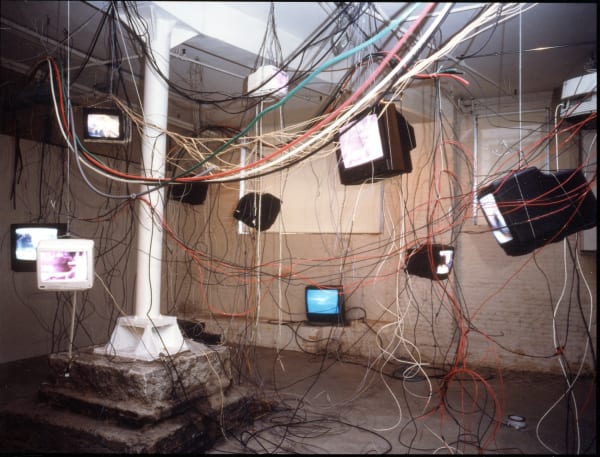Carolee Schneemann: More Wrong Things
Hales Gallery is delighted to announce More Wrong Things, the gallery’s second solo exhibition with Carolee Schneemann. For over five decades – from her groundbreaking anti-Vietnam war film Viet-Flakes (1965), featured in the 1967 performance Snows, to her current work on the ongoing conflict in Syria – Carolee Schneemann’s art has unwaveringly borne witness to the realities of war and suffering. In Schneemann’s own words, referring to the political landscape of the 1960s:
We were being moved, we were being affected by images bringing information that was startling and taboo and terrible and made you convinced you had to do something. To enter the image itself! Activation as an intervention into the politics behind the revelatory images.
1977 Interview with Katie Haug, repr. in Imaging Her Erotics: Essays, Interviews, Projects (MIT Press: 2001)
This exhibition brings together works by Schneemann that take on this task, of activating the ‘revelatory’ images which emerge from sites of conflict and tragic events. Through video installation, photography and painting, Schneemann explores the invasion and devastation of Lebanon in the 1980s, the collapse of the Twin Towers on 9/11, and a range of other personal and public disasters. What unites each of these works is not just the visual motive – representations of the atrocities of war – but also the deeply personal, even intimate, nature of Schneemann’s eulogies and laments. Whilst global suffering often seems remote or incomprehensible, Schneemann’s work reveals the shared and personal dimensions of grief, embracing our collective humanity.
The exhibition’s title is drawn from the central piece, More Wrong Things (2000), an installation which highlights the imbrication of personal and public grief whilst also enacting a second, closely linked theme: the mediation of suffering. Around fifteen monitors suspended from the ceiling are nestled in a tangled maze of wires, cables and cords. On these monitors, video loops depicting a compendium of ‘wrong things’ play in sequence: footage from Schneemann’s archive of personal and public tragedies. The accumulation of images emphasises the perpetual cycle of terrible events filtered down to us through the media, creating an atmosphere of often paralysing crisis. And yet, through the artist’s inclusion of her own intimate pain alongside that of global events, we are invited to enter the images, sharing in the grief they depict.
Alongside the chaotic web of More Wrong Things are exhibited works drawn from two significant projects focusing on specific events in contemporary history, discrete but deeply connected crises born out of the ongoing turmoil in the Middle East: the astonishing Dust Paintings, created as part of Schneemann’s in-depth investigation into the Lebanese war and the region’s history and Terminal Velocity, the artist’s response to the shocking events of 9/11.
Schneemann’s identity as a painter, skillfully working in three-dimensional time and space, is foregrounded in the potent materiality and richness of visual metaphor throughout the works in this exhibition. In the dust paintings, layers of ash thrown and spilled onto thick paper construct a tactile surface, from which emerge mysterious embedded images and objects: defunct computer chip boards, representing lost civilisations; shards of glass; occasional photographs representing the landscapes of war-torn Lebanon.
Meanwhile, in Terminal Velocity the tragic images of nine people falling to their deaths from the Twin Towers are scanned and enlarged in sequence to create ‘a photographic grid as eulogy’ (artist statement). The work echoes and subverts the traditional modernist emblem of the grid, replacing modernism’s transcendence and autonomy with an insistence on intimate contact with the living – and dying – body.
Whether through photographic enlargement and montage, painterly collage or video installation, the works in this exhibition themselves function as mediations of suffering, revealing Schneemann’s own quest to understand the contemporary landscape of conflict and tragedy. In each of these works, Schneemann directly implicates both herself and the viewer in the images of suffering – a reminder that the West, despite the illusion of distance, has been highly involved and even complicit in the escalation of Middle Eastern conflict. At their core, whilst responding to urgent global issues, the works are also about the subjectivity that lies at the heart of making and viewing art, and experiencing the world around us.






